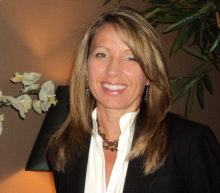Spotting Sinkholes
(Inside Science TV) -- They can be big, dangerous, and unpredictable. Sinkholes can cause sudden, serious damage in a matter of seconds.
"It scares me a lot because it could happen to anybody," said Tena Cooper, a resident of Winter Haven, Florida.
Sinkholes happen when water eats away at underground rock, creating pits and craters. Cooper lives near a sinkhole that was 15 feet deep and 70 feet wide.
"Sometimes, the soil on top caves in and gives us a cavity," said Manoj Chopra, a civil engineer at the University of Central Florida in Orlando.
Some sinkholes happen slowly as the ground gradually gives way, others cave in suddenly.
"There is no way to predict it at this point," said Chopra.
Now, by simulating sinkholes in a lab, engineers want to uncover clues that might help predict when and where a collapse will occur.
"The water table potentially gives you a signal before a sinkhole is about to open because of the fact that the water levels are dropping," Chopra explained.
Scientists are monitoring water and temperature levels to see if the information can lead to accurate predictions. They want to create a database that will show different patterns of sinkholes.
"We are trying to make some kind of physical model of sinkholes to simulate physically the sinkhole," said Mohamed Alrowaimi, a doctoral student at UCF.
Researchers hope the models will provide an accurate way to predict when a disaster like this might happen.
One of the largest sinkholes in the state of Florida happened in Winter Park in 1981. The cavity slowly opened up and swallowed a house, a swimming pool and several cars from a nearby dealership. When it stopped expanding, it had reached 350 feet wide and 125 feet deep.

